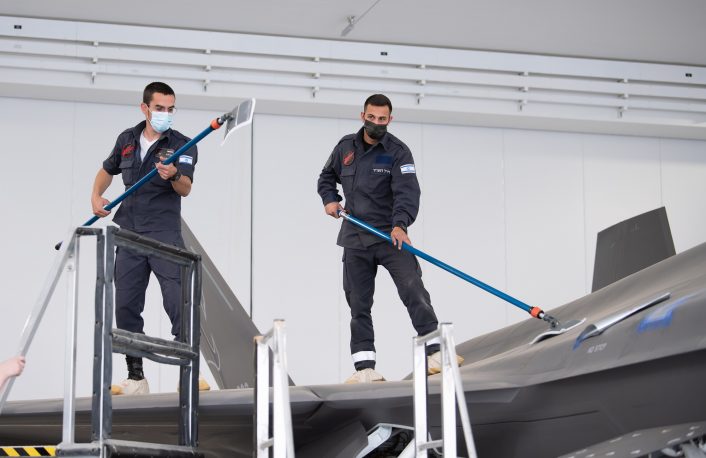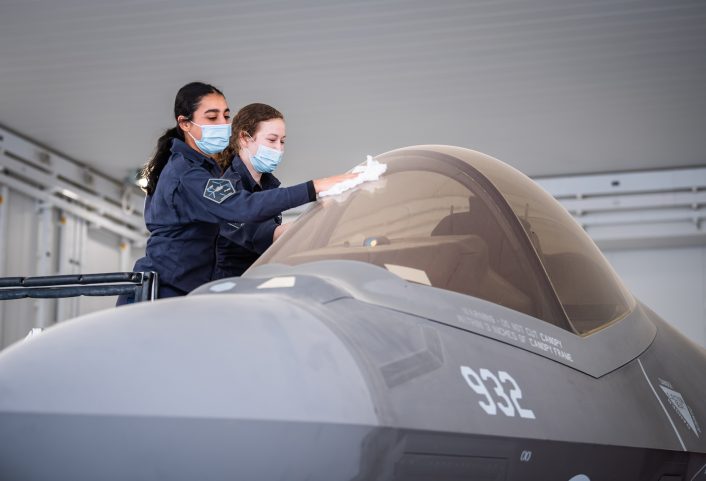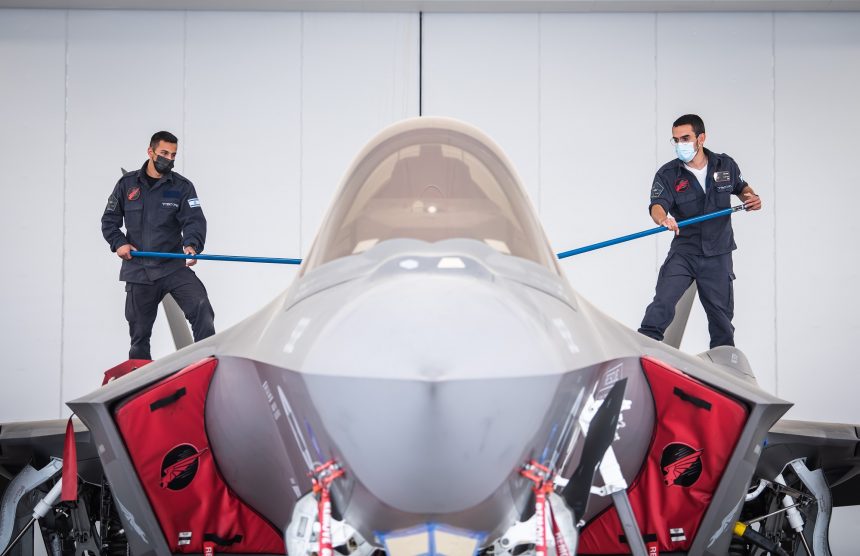The F-35I “Adir” (just like any other Lightning II aircraft) requires the exterior paint or coating to be regularly cleaned to preserve its LO (Low Observability).
Several things combine to provide the F-35’s LO (Low Observability). In fact, LO is considered a “system” itself of the 5th generation stealth jet: the shape of the aircraft, that is to say the lines and contours of the exterior design along with the the composite panels and parts that make up the body, the radar absorbent materiel that coats the entire jet and the engine. All of these contribute to deflecting or absorbing enemy radar emissions.
However, during the flight, the exterior coating of the F-35, exactly as the paint of any other aircraft, can get worn down because of dust, bugs or simply friction of air on the surfaces. For this reason, the aircraft exterior coating, panels, seams, are inspected after each flight, to look for anything that might affect the jet’s stealthiness, identifying any damage or scratches. Removing sand particles and dirt that settle on the aircraft surfaces and may turn into abrasions of the coating.
The Israeli Air Force has just published on their official website, some interesting details about the cleaning of the external surfaces of their peculiar Lightning II, designated F-35I “Adir (“Mighty One”).

“You have to make sure that the plane is clean because LO is very important,” Major Eddie, a technical officer of Squadron 116 (“Southern Lions”) which operates the F-35I “Adir”, says in the official release. “When our planes are clean and well maintained – the end result looks accordingly. […] Apart from that, there are lenses and cameras that can impair the quality of the image they provide if they are not properly cleaned.”
Most planes are cleaned every few weeks with a frequency that depends on the type, size etc. For instance, the F-16I “Sufa” is easier to clean because it is relatively small, for sure smaller than the C-130J “Samson”. “There are teams in the world that use a giant washing machine for airplanes,” explains Major Eddie. “This is not the case with us – the Israeli Air Force cleans manually with a special soap.”
Cleaning an F-35I “Adir” is even more challenging. “We clean the plane once every three months or so, and each time the process takes two days,” explains Major Eddie. “Three technicians must be assigned to this task, along with an accompanying supervisor.”
Needless to say the coating is one of the most sensitive parts to be cleaned and that’s why the technicians wear galoshes and are very careful when cleaning, as the process is complex and requires maximum precision.
The 116th “Lions Of The South” squadron became the second to operate the “Adir” when it was officially reopened on Jan. 16, 2020 at Nevatim Air Base in southern Israel. Both the 140th and 116th Squadrons, that make up the “Adir Division”, previously operated the F-16A/B “Netz” (Hawk), a type that was retired after 36 years of service in December 2016.
H/T @ryankakiuchan for the heads-up!










